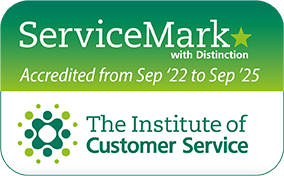Check out our back to basics, easy to understand guide to Cash ISAs.
There has recently been a heated argument in the Ambridge village parish council meeting in Borsetshire, where plans for a new small development of homes in the village were being debated.
Borsetshire is a fictional county, in the BBC Radio 4 series The Archers, and this recent storyline has heard Ambridge residents voicing their concerns over the proposed development because it would provide a portion of Shared Ownership homes. Local residents are concerned that this would affect their rural idyll. At the meeting, Jennifer Aldridge (the wife of a wealthy land owner) voiced her concern that introducing ‘Shared Ownership’ homes would encourage ‘riff-raff’ to the village.
To fellow village resident, Emma Grundy, this was wholly unfair. She has lived in the village all her life, and with her husband and two children, they have been unable to afford to buy within the village, where property prices have been pushed high by ‘townies’ buying weekend homes. The proposed development would put their dreams of having their own home, in the village they grew up in, in touching distance.
We agree with Emma. Shared Ownership has been much misunderstood as a route to home ownership, and to help Ambridge residents, who share Jennifer’s opinion, we have identified the three key myths around Shared Ownership that are worrying them, and present the evidence to disprove these misconceptions:
- Shared Ownership is social housing and not home ownership, and the homes will not be owned or cared for. WRONG – Shared Ownership makes it possible to buy a property which otherwise would not have been affordable. It is a Government backed, part buy/part rent scheme, where purchasers buy a share in the property and pay rent on the share they don’t own. It is designed as a stepping stone for first time buyers to completely own their own home, allowing them to buy further shares in their property over time (which is called Staircasing).
- The homes will be of less quality or unsightly. WRONG - A mistaken public perception is that shared ownership homes may be badly maintained, poor quality properties in poor, or less desirable, areas. Again, this is far from the truth. Properties available through the scheme can be found in sought-after areas, usually within high quality developments with a range of house sizes. The quality and specification the houses provided by the development’s housebuilder will be the same, regardless of how they will be purchased.
- Qualification for shared ownership is difficult and it won’t be for local people. WRONG - Some believe to qualify for a shared ownership property, you need to have a very low income or be a key worker - a public sector employee working in an essential service such as police officers, firefighters or NHS staff. In reality, the concept is open to a very broad section of society. Simply put, anyone with a household income up to £60,000 per annum can qualify – (or up to £71,000 a year in London) for a one or two bedroom property, or up to £85,000 a year for a property with three or more bedrooms. Shared ownership is a great opportunity for young professionals, couples and families to make the first move to buying their own home. To register for shared ownership, prospective buyers would need to register with their local Housing Association to be notified of opportunities within their community.
Whilst Shared Ownership is not the sole answer to the ongoing housing problems, it does provide first time buyers and those on low to mid wages with an opportunity to get their foot on the property ladder and a home they can call their own, especially in expensive housing areas, like Ambridge.
What’s more, the buying model is an integral part of the Government’s affordable housing strategy - with that in mind, it’s worth pointing out that some equity, large or small, in many ways is better than none. It would mean that Emma Grundy, and her family would have a home they could afford to own, in their community, in which they could gradually increase their share of equity in.
We have our fingers crossed that the development gets approval!
For further details please visit our page on Shared Ownership mortgages or read Help to Buy South's Guide to Shared Ownership.







